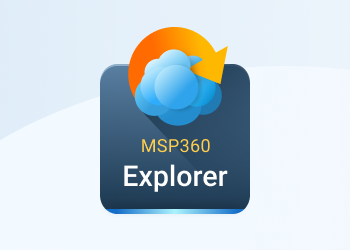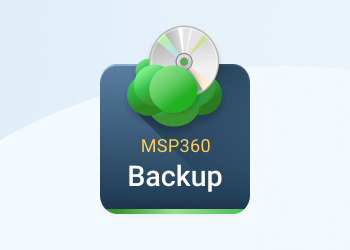We are happy to introduce MSP360 Backup for Microsoft 365 and Google Workspace 4.8, which brings a major addition to the storage experience – built-in managed cloud storage.
With this release, the need for third-party storage setup is entirely eliminated, configuration time is reduced, and administrators can start protecting Microsoft 365 and Google Workspace data immediately upon sign up. Continue reading
Free-To-Trial License Upgrade in CloudBerry Explorer 5.0.3
The latest iteration of CloudBerry Explorer has been released. Version 5.0.3 brings a new license upgrade mechanism that enables you to seamlessly switch from the free to trial tier. Let's take a closer look at the new feature.
How to Remove Files from Backup Storage with MSP360 Backup
If you need to delete data from the backup storage in MSP360 Backup just click it with the right mouse button and then click the Delete button. This will remove data from the backup storage tab and the backup storage itself. Screenshot is ahead
Support for Backup of Exchange Databases from DAG in MSP360 Backup
MSP360 Backup features a number of new long-awaited improvements. Among them is support for backup of Microsoft Exchange databases from passively-configured servers in the DAG cluster. Read on to learn how to utilize the new feature in our flagship backup solution.
Continue reading
Snowball Import for SQL Server in MSP360 Backup 5.4
Our team has been laboring day and night for the last month to bring you MSP360 Backup 5.4. One of the novelties of the latest iteration of our flagship backup solution is support for AWS Snowball import for SQL Server.
Introducing MSP360 Backup 5.4
Our team has been laboring day and night for the last couple of months to bring you the next iteration of our flagship product — MSP360 Backup 5.4. This release flaunts a handful of useful novelties and improvements. Read on to get a brief summary of major changes.
Continue reading
Troubleshooting VSS (Volume Shadow Service) Issues
In this article, we are going to overview the basics of the Volume Shadow Copy Service concept so you can better understand underlying backup processing. You will also find a quick VSS troubleshooting guide and a few useful links that can help in most VSS-related issues.
Continue reading
OneDrive for Business Support in MSP360 Explorer 2.8 for Azure
MSP360 Explorer for Azure has been updated to expand the list of available cloud storage solutions. Namely, Microsoft OneDrive for Business is now supported.
Continue reading
MSP360 Backup: How to Move Repository
MSP360 Backup uses local index database called repository to minimize the number of requests to S3. Under certain conditions the database can grow. So it is sometimes necessary to move the repository to another disk with more space. Technically the repository is an SQLite database file called CBBackup.db
Support for larger Azure Block Blobs in MSP360 Backup & Explorer
Microsoft has recently updated its Azure Storage architecture to increase the size of the maximum allowable block size. The latest editions of MSP360 Backup and MSP360 Explorer for Windows have in turn timely gained support for this novelty.
Cross-Account Copy with MSP360 Explorer for Windows Azure
MSP360 Explorer for Microsoft Azure now supports cross-account copy – a feature of Microsoft Azure that allows copying data between storage accounts within the Azure infrastructure. With the latest enhancements, Explorer for Microsoft Azure has become one of the most efficient and easy solutions for moving data from one Azure account to another. Cross-account copy allows saving time and funds on data migration as you don’t need to move data from Azure to your local computer and back anymore.
Continue reading
How to Setup Object Expiration with MSP360 Explorer for Amazon S3
Bucket Lifecycle feature in MSP360 Explorer allows users to specify Object Expiration policy for Amazon S3. This feature makes it easier for our customers to use the functionality of Amazon S3. Lifecycle feature now consists of two options: Object Expiration and Transition.
Continue reading







